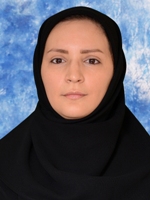Introduction
Iran is located in an arid and semi-arid zone with annual rainfall around 250 mm (less than one third of annual globe average precipitation). Moreover, the mentioned limited rainfall is distributed in such a condition that no water is available for consumers when and where is needed, in most circumstances. This has been a serious challenge for Iranians all along the history to manage the water resources, control the surface water, and distribute it as desired. Many historical hydraulic structures such as gravity and arch dams, diversion works, canals, water mills, ice chambers and Qanats (Kareez), spread all over the country (particularly in dryer parts), indicate the Iranians efforts to find innovative solutions to the problem of water resources management.
Nowadays the water need has been increased much more with heavy agricultural, industrial and municipal requirements, while available water resources remain almost the same. This means that much more effort is requited to control the surface water runoff. Design, construction and operation of hydraulic structures such as large dams have been always considered as an efficient remedy to this problem. In past 50 years, many large dams were constructed and many others are currently in the design stage.
The division of "Hydraulics and Hydraulic Structures" was established 25 years ago in the School of Civil Engineering at University of Tehran, to provide required advanced professional trainings leading to the degree of Master of Science (M.Sc.) and Doctor of Philosophy (Ph.D.). From this division, more than 300 students have obtained Masters Degrees, and around 25 Ph.D. students have been graduated.















